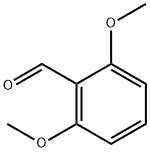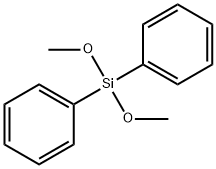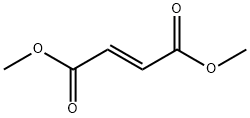1,1-Dimethoxydecane
- CAS NO.:7779-41-1
- Empirical Formula: C12H26O2
- Molecular Weight: 202.33
- MDL number: MFCD00036509
- EINECS: 231-928-6
- SAFETY DATA SHEET (SDS)
- Update Date: 2024-12-18 14:08:57

What is 1,1-Dimethoxydecane?
Chemical properties
1,1-Dimethoxydecane is a colorless liquid. Almost insoluble in water, soluble in alcohol and oils. It has a characteristic, herbaceous, green, citrus-floral odor and a brandy, cognac flavor.
The Uses of 1,1-Dimethoxydecane
1,1-Dimethoxydecane is an aroma compound of fresh blackberries and is used in citrus oils.
The Uses of 1,1-Dimethoxydecane
Finds some use in perfume compositions, mainly in heavy floral bases, Gardenia, Cassie, Tuberose, etc. and occasionally in Citrusy topnotes as a modifier for the Aldehydes. Its odor is overall more refreshing than that of the parent aldehyde.
Preparation
From decanal and methyl alcohol.
Definition
ChEBI: 1,1-Dimethoxydecane is an acetal.
Aroma threshold values
Aroma characteristics at 1.0%: heavy fatty, waxy citrus orange with a strong aldehydic character. It also has a slightly green/vegetative bell pepper nuance.
Taste threshold values
Taste characteristics at 2 ppm: fatty, waxy, citrus orange with fatty aldehydic nuances and a hint of mushroom.
Safety Profile
A skin irritant. When heated to decomposition it emits acrid smoke and irritating fumes
Properties of 1,1-Dimethoxydecane
| Boiling point: | 218 °C(lit.) |
| Density | 0.83 g/mL at 25 °C(lit.) |
| FEMA | 2363 | DECANAL DIMETHYL ACETAL |
| refractive index | n |
| Flash point: | 199 °F |
| solubility | Chloroform (Sparingly), Ethyl Acetate (Slightly), Methanol |
| form | Oil |
| color | Colourless |
| Odor | at 10.00 % in dipropylene glycol. waxy herbal citrus green neroli |
| JECFA Number | 945 |
| NIST Chemistry Reference | Decanal dimethyl acetal(7779-41-1) |
| EPA Substance Registry System | Decane, 1,1-dimethoxy- (7779-41-1) |
Safety information for 1,1-Dimethoxydecane
| Signal word | Warning |
| Pictogram(s) |
 Exclamation Mark Irritant GHS07  Environment GHS09 |
| GHS Hazard Statements |
H315:Skin corrosion/irritation H411:Hazardous to the aquatic environment, long-term hazard |
| Precautionary Statement Codes |
P273:Avoid release to the environment. |
Computed Descriptors for 1,1-Dimethoxydecane
New Products
Tert-butyl bis(2-chloroethyl)carbamate (S)-3-Aminobutanenitrile hydrochloride N-Boc-D-alaninol N-BOC-D/L-ALANINOL 3-Morpholino-1-(4-nitrophenyl)-5,6-dihydropyridin- 2(1H)-one Furan-2,5-Dicarboxylic Acid Tropic acid N-octanoyl benzotriazole 1,1’-CARBONYLDIIMIDAZOLE R-2-BENZYLOXY PROPIONIC ACID 4-HYDROXY BENZYL ALCOHOL 1,1’-CARBONYLDI (1,2-4 TRIAZOLE) S-2-CHLORO PROPIONIC ACID (2-Hydroxyphenyl)acetonitrile 4-Bromopyrazole 5-BROMO-2CYANO PYRIDINE 5-broMo-2-chloro-N-cyclopentylpyriMidin-4-aMine 2-(Cyanocyclohexyl)acetic acid 4-methoxy-3,5-dinitropyridine 2-aminopropyl benzoate hydrochloride 1-(4-(aminomethyl)benzyl)urea hydrochloride diethyl 2-(2-((tertbutoxycarbonyl)amino) ethyl)malonate tert-butyl 4- (ureidomethyl)benzylcarbamate Ethyl-2-chloro((4-methoxyphenyl)hydrazono)acetateRelated products of tetrahydrofuran








You may like
-
 873-83-6 6-Aminouracil (or) 4-Amino-2,6- dihydroxypyrimidine, (or) 6-Amino2,4-pyrimidinediol 99%View Details
873-83-6 6-Aminouracil (or) 4-Amino-2,6- dihydroxypyrimidine, (or) 6-Amino2,4-pyrimidinediol 99%View Details
873-83-6 -
 55441-95-7 99%View Details
55441-95-7 99%View Details
55441-95-7 -
 N-Vinylformamide 99%View Details
N-Vinylformamide 99%View Details
13162-05-5 -
 Chloro Uracil 1820-81-1 99%View Details
Chloro Uracil 1820-81-1 99%View Details
1820-81-1 -
 207557-35-5 99%View Details
207557-35-5 99%View Details
207557-35-5 -
 2-ethyl-6-methyl-3-hydroxypyridine succinate 99%View Details
2-ethyl-6-methyl-3-hydroxypyridine succinate 99%View Details
127464-43-1 -
 2-ETHYLPYRIDINE 100-71-0 99%View Details
2-ETHYLPYRIDINE 100-71-0 99%View Details
100-71-0 -
 181228-33-1 (S)-Methyl 3-amino-2-((tert-butoxycarbonyl)amino)propanote Hydrochloride (DAP-OMe. HCl) 99%View Details
181228-33-1 (S)-Methyl 3-amino-2-((tert-butoxycarbonyl)amino)propanote Hydrochloride (DAP-OMe. HCl) 99%View Details
181228-33-1